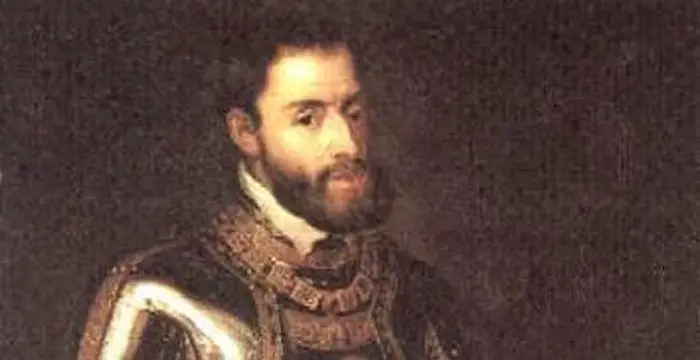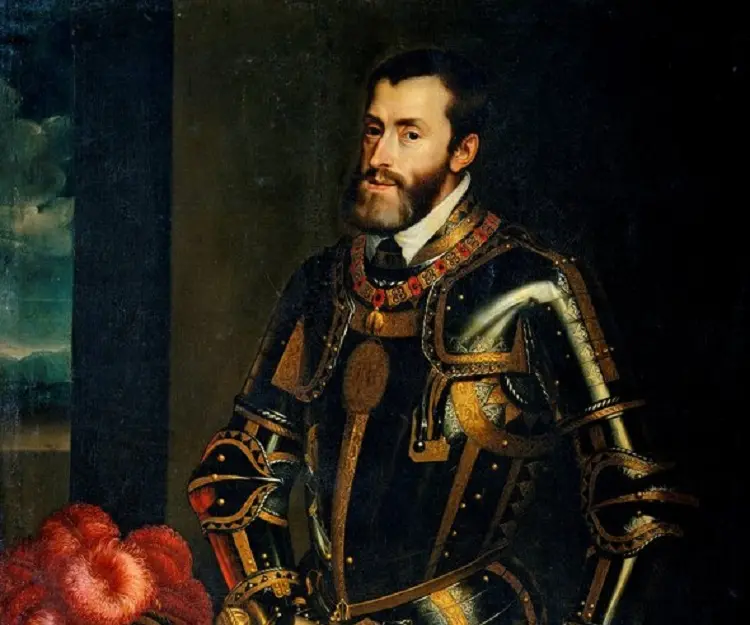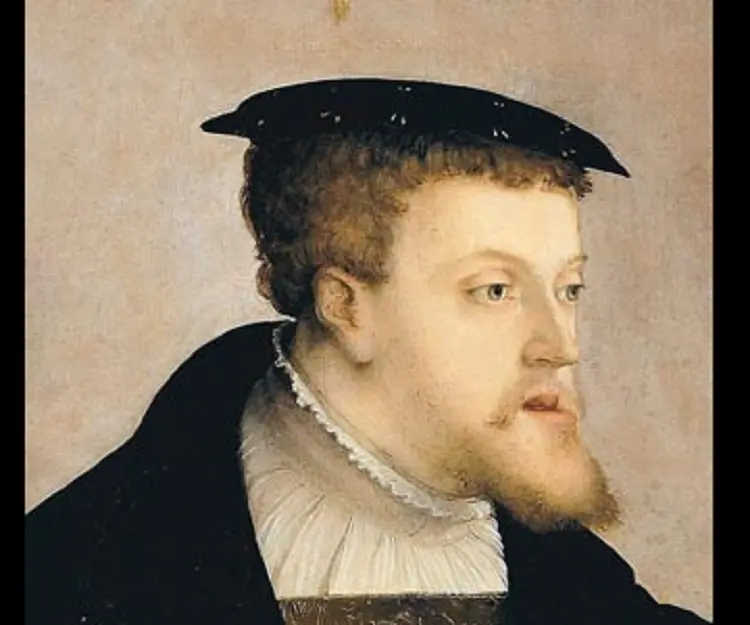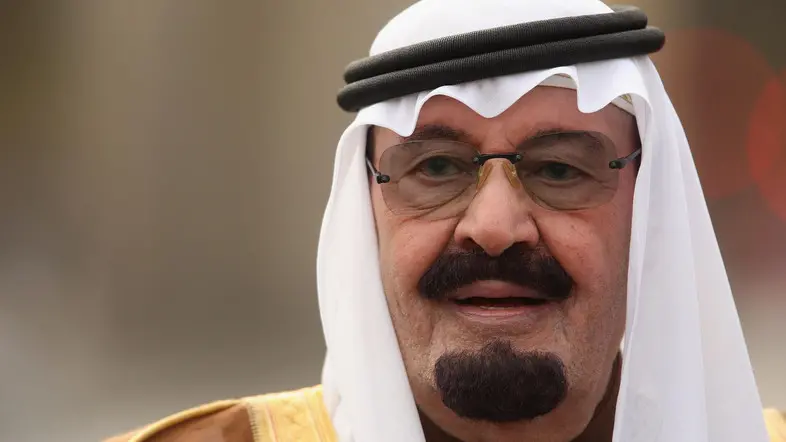
Charles V, Holy Roman Emperor - Kings, Life Achievements and Childhood
Charles V, Holy Roman Emperor's Personal Details
Charles V was the Holy Roman Emperor as well as the King of the Romans and King of Italy
| Information | Detail |
|---|---|
| Birthday | February 24, 1500 |
| Died on | September 21, 1558 |
| Nationality | Italian |
| Famous | Historical Personalities, Emperors & Kings, Emperors, Former Holy Roman Emperor, Kings |
| Spouses | Isabella of Portugal |
| Siblings | Catherine of Austria, Eleanor of Austria, Ferdinand I, Holy Roman Emperor, Isabella of Austria, Mary of Hungary, Queen of Portugal |
| Childrens | Philip II of Spain |
| Founder / Co-Founder |
|
| Birth Place | Ghent |
| Religion | Roman Catholic Church |
| Gender | Male |
| Father | Philip I of Castile |
| Mother | Joanna of Castile |
| Sun Sign | Pisces |
| Born in | Ghent |
| Famous as | Former Holy Roman Emperor |
| Died at Age | 58 |
// Famous Kings
Sundiata Keita
Sundiata Keita was the founder of the Mali Empire in West Africa. This biography profiles his childhood, early life, struggles, founding of empire, rule, administration, achievements and also gives some fun facts.
Ashoka
Ashoka was the third emperor of the Mauryan Dynasty and ruled almost the entire Indian subcontinent. This biography profiles his childhood, life, reign, achievements and timeline
Murad IV
Murad IV was one of the mighty Sultans in the history of the Ottoman Empire. This biography profiles his childhood, family, accession, rule, administration and timeline.
Charles V, Holy Roman Emperor's photo
Who is Charles V, Holy Roman Emperor?
Charles V was the Holy Roman Emperor, as well as the King of the Romans and King of Italy. He ruled over the Spanish Empire from 1516 and the Holy Roman Empire from 1519, along with the Habsburg Netherlands from 1506. During his reign he consolidated vast territories in western, central, and southern Europe and brought them under his rule. He also brought under his reign the Spanish colonies in the Americas and Asia. His empire was so vast and extensive that it became one of the first to be described as "the empire on which the sun never sets." Even though he was a very powerful emperor and a much respected figure, he struggled to properly manage his vast empire and defend his territories from the increasing Ottoman and French pressure, even facing hostility from the pope. Many major conflicts took place during his reign, most notably the Habsburg-Valois Wars with France and conflicts with the German princes resulting from the Protestant Reformation. Already inflicted with numerous health issues, Charles V gradually abdicated all his positions in favour of his son Philip II and brother Ferdinand I. He then retired to a monastery where he spent the final years of his life.
Childhood & Early Life
Charles V was born on 24 February 1500 in Ghent, Flanders, Habsburg Netherlands, as the eldest son of Philip the Handsome and Joanna of Castile. His paternal grandparents were the Holy Roman emperor Maximilian I and Mary, duchess of Burgundy, while his maternal grandparents were the Roman Catholic king and queen of Spain, Ferdinand II and Isabella I.
As a result of his rich royal legacy, he was the heir of three leading dynasties in Europe: the Houses of Valois-Burgundy (Netherlands), Habsburg (Holy Roman Empire), and Trastámara (Spain).
As the crown prince, he was raised with utmost care and was tutored by the able scholars William de Croÿ and Adrian of Utrecht. He learned to speak several languages, including French and Dutch. He also had a decent command over Castilian Spanish and German.
Accession & Reign
Charles V was just six years old when his father died. Thus he inherited his father's Burgundian territories in 1506. These territories included the Low Countries and Franche-Comté and most of the holdings were fiefs of the German Kingdom (part of the Holy Roman Empire).
Since he was a minor at that time, his father’s sister, Margaret of Austria was appointed as regent until 1515 by Emperor Maximilian. His inheritance of the territories led to several conflicts which his aunt dealt with deftly.
In 1515, Pier Gerlofs Donia and Wijard Jelckama led the rebellion of Frisian peasants against Charles V. Though initially successful, the rebels were later overpowered and eventually defeated. The last remaining leaders of the rebellion were executed in 1523.
Meanwhile, his maternal grandfather Ferdinand II had died in February 1516. According to his will, Charles, along with his mother, was to govern in Aragon and Castile. Ferdinand’s most trusted advisor, Francisco, Cardinal Jiménez de Cisneros, who was the archbishop of Toledo, was to direct the administration in Castile.
Since Charles’ mother suffered from a serious illness that rendered her incapable of ruling the territories, the young Charles was proclaimed king in Brussels as Charles I of Aragon and Castile on March 14, 1516.
A young man now, Charles began to expand his territories. He successfully annexed Tournai, Artois, Utrecht, Groningen and Guelders and brought them under his rule.
The Low Countries which he had inherited were of significant importance to him. While they held certain personal significance to him, they were also the hub of trade and commerce which made them particularly valuable to the young ruler as the lands represented an important source of income for the imperial treasury.
Charles V’s vast inheritances included the Crown of Aragon which comprised the Kingdom of Naples, the Kingdom of Sicily and the Kingdom of Sardinia. Earlier, the Duchy of Milan also fell under the Crown of Aragon but it had been annexed by the French even before Charles came to power. In 1522, Charles succeeded in re-capturing Milan.
Being the ruler of the Habsburg Monarchy since 1519, Charles was one of the candidates to claim the title of the Holy Roman Emperor. After he successfully defeated the candidacies of Frederick III, Elector of Saxony, Francis I of France, and Henry VIII of England, Charles V was crowned Holy Roman Emperor by Pope Clement VII in Bologna in 1530.
Major Wars & Battles
Charles V had been involved in numerous conflicts with France, one of the major ones being the Italian War of 1521–26. Francis I of France and Charles V had a personal rivalry as both had been candidates for election as Holy Roman Emperor. Their enmity intensified once Charles V was made the Holy Roman Emperor.
In 1521, Charles V took Milan from the French and returned it to Francesco Sforza, the Duke of Milan, the following year. In 1525, Francis led his army into Lombardy, only to face a humiliating defeat following which he was imprisoned. Eventually Francis had to sign the Treaty of Madrid in January 1526, thereby surrendering his claims to Italy, Flanders, and Burgundy to secure his release.
The Ottoman–Habsburg wars had already started brewing by the time Charles V became the Holy Roman Emperor. By the 16th century, the Ottomans had become a serious threat to Charles’ powers. Threatened by the Ottomans’ growing influence, Charles V led a massive Holy League against the Ottoman city of Tunis.
The battles continued for a few years during which many soldiers in the 60,000-strong Holy League army lost their lives to wounds and disease. Finally in 1538, the Ottomans defeated the Holy League at the Battle of Preveza.
A deeply devout Roman Catholic, Charles V vehemently opposed the spread of Protestantism. Instead, he called for reformation within the Roman Catholic Church and also attempted to find a modus vivendi with the Protestants. This brought him in conflict with the Protestant Princes who allied with Henry II of France to fight against Charles. He was ultimately forced to concede the Peace of Augsburg of 1555.
Abdications
Charles V’s reign was marked by several conflicts and battles which took their toll on the emperor’s physical and mental wellbeing. Having ascended to the throne at a very young age, the emperor was growing weary by the time he was in his fifties. He was also plagued by several health problems. Owning to these issues, and also the rising Ottoman and French pressures, he decided to voluntarily abdicate all his positions.
He began the process of abdications in the 1550s. In 1554, he abdicated the thrones of Sicily and Naples, the Duchy of Milan, and both fiefs of the Papacy to his son Philip. He abdicated the throne of Sicily in 1556; he had abdicated as the ruler of the Spanish Empire earlier the same year in favor of Philip.
Finally in September 1556, he abdicated as the Holy Roman Emperor in favor of his brother Ferdinand I. However, this abdication was not formally accepted by the Electors of the Empire until 1558.
After abdicating all his positions, Charles V retired to the Monastery of Yuste in Extremadura.
Personal Life & Legacy
Charles V married his first cousin Isabella of Portugal, sister of John III of Portugal on 10 March 1526. The marriage was primarily a political arrangement, with Isabella bringing Charles a hefty dowry. The couple went on a long honeymoon and quickly fell deeply in love with each other.
Isabella proved to be a loving wife and a devoted mother in addition to being an astute politician as well. Theirs was a very happy marriage. The couple had six children, though only three survived to adulthood: Philip II of Spain, Maria, and Joanna. Unfortunately, Isabella died in childbirth in 1539, from complications resulting from having borne a stillborn baby.
The emperor was shattered following the death of his beloved wife and grieved her loss for the rest of his life. He never remarried.
Charles V also had a few illegitimate children apart from the ones he had with his wife.
He suffered from several ailments, including an enlarged lower jaw, a hereditary disorder in the Habsburg family probably caused by the family's long history of inbreeding. He also suffered from gout and epilepsy.
His health deteriorated in his final years and he was in so much pain that he could not even walk. He became seriously ill with malaria in August 1558. He died the following month on 21st September 1558, at the age of 58. At the time of his death, he had been holding in his hand the cross that his wife Isabella had been holding when she died.
He was initially buried in the chapel of the Monastery of Yuste and his remains were later moved to the newly constructed Monastery of San Lorenzo de El Escorial in 1574.
// Famous Emperors
Sundiata Keita
Sundiata Keita was the founder of the Mali Empire in West Africa. This biography profiles his childhood, early life, struggles, founding of empire, rule, administration, achievements and also gives some fun facts.
Ashoka
Ashoka was the third emperor of the Mauryan Dynasty and ruled almost the entire Indian subcontinent. This biography profiles his childhood, life, reign, achievements and timeline
Murad IV
Murad IV was one of the mighty Sultans in the history of the Ottoman Empire. This biography profiles his childhood, family, accession, rule, administration and timeline.
Charles V, Holy Roman Emperor's awards
| Year | Name | Award |
|---|---|---|
Other | ||
| 0 | Knight of the Order of the Golden Fleece | |
Charles V, Holy Roman Emperor biography timelines
- // 24th Feb 1500Charles V was born on 24 February 1500 in Ghent, Flanders, Habsburg Netherlands, as the eldest son of Philip the Handsome and Joanna of Castile. His paternal grandparents were the Holy Roman emperor Maximilian I and Mary, duchess of Burgundy, while his maternal grandparents were the Roman Catholic king and queen of Spain, Ferdinand II and Isabella I.
- // 1506Charles V was just six years old when his father died. Thus he inherited his father's Burgundian territories in 1506. These territories included the Low Countries and Franche-Comté and most of the holdings were fiefs of the German Kingdom (part of the Holy Roman Empire).
- // 1515Since he was a minor at that time, his father’s sister, Margaret of Austria was appointed as regent until 1515 by Emperor Maximilian. His inheritance of the territories led to several conflicts which his aunt dealt with deftly.
- // 1515 To 1523In 1515, Pier Gerlofs Donia and Wijard Jelckama led the rebellion of Frisian peasants against Charles V. Though initially successful, the rebels were later overpowered and eventually defeated. The last remaining leaders of the rebellion were executed in 1523.
- // 1516Meanwhile, his maternal grandfather Ferdinand II had died in February 1516. According to his will, Charles, along with his mother, was to govern in Aragon and Castile. Ferdinand’s most trusted advisor, Francisco, Cardinal Jiménez de Cisneros, who was the archbishop of Toledo, was to direct the administration in Castile.
- // 1516Since Charles’ mother suffered from a serious illness that rendered her incapable of ruling the territories, the young Charles was proclaimed king in Brussels as Charles I of Aragon and Castile on March 14, 1516.
- // 1519Being the ruler of the Habsburg Monarchy since 1519, Charles was one of the candidates to claim the title of the Holy Roman Emperor. After he successfully defeated the candidacies of Frederick III, Elector of Saxony, Francis I of France, and Henry VIII of England, Charles V was crowned Holy Roman Emperor by Pope Clement VII in Bologna in 1530.
- // 1521Charles V had been involved in numerous conflicts with France, one of the major ones being the Italian War of 1521–26. Francis I of France and Charles V had a personal rivalry as both had been candidates for election as Holy Roman Emperor. Their enmity intensified once Charles V was made the Holy Roman Emperor.
- // 1521In 1521, Charles V took Milan from the French and returned it to Francesco Sforza, the Duke of Milan, the following year. In 1525, Francis led his army into Lombardy, only to face a humiliating defeat following which he was imprisoned. Eventually Francis had to sign the Treaty of Madrid in January 1526, thereby surrendering his claims to Italy, Flanders, and Burgundy to secure his release.
- // 1522Charles V’s vast inheritances included the Crown of Aragon which comprised the Kingdom of Naples, the Kingdom of Sicily and the Kingdom of Sardinia. Earlier, the Duchy of Milan also fell under the Crown of Aragon but it had been annexed by the French even before Charles came to power. In 1522, Charles succeeded in re-capturing Milan.
- // 1526Charles V married his first cousin Isabella of Portugal, sister of John III of Portugal on 10 March 1526. The marriage was primarily a political arrangement, with Isabella bringing Charles a hefty dowry. The couple went on a long honeymoon and quickly fell deeply in love with each other.
- // 1538The battles continued for a few years during which many soldiers in the 60,000-strong Holy League army lost their lives to wounds and disease. Finally in 1538, the Ottomans defeated the Holy League at the Battle of Preveza.
- // 1539Isabella proved to be a loving wife and a devoted mother in addition to being an astute politician as well. Theirs was a very happy marriage. The couple had six children, though only three survived to adulthood: Philip II of Spain, Maria, and Joanna. Unfortunately, Isabella died in childbirth in 1539, from complications resulting from having borne a stillborn baby.
- // 1554He began the process of abdications in the 1550s. In 1554, he abdicated the thrones of Sicily and Naples, the Duchy of Milan, and both fiefs of the Papacy to his son Philip. He abdicated the throne of Sicily in 1556; he had abdicated as the ruler of the Spanish Empire earlier the same year in favor of Philip.
- // 1556Finally in September 1556, he abdicated as the Holy Roman Emperor in favor of his brother Ferdinand I. However, this abdication was not formally accepted by the Electors of the Empire until 1558.
- // 21st Sep 1558His health deteriorated in his final years and he was in so much pain that he could not even walk. He became seriously ill with malaria in August 1558. He died the following month on 21st September 1558, at the age of 58. At the time of his death, he had been holding in his hand the cross that his wife Isabella had been holding when she died.
// Famous Emperors & Kings
Sundiata Keita
Sundiata Keita was the founder of the Mali Empire in West Africa. This biography profiles his childhood, early life, struggles, founding of empire, rule, administration, achievements and also gives some fun facts.
Ashoka
Ashoka was the third emperor of the Mauryan Dynasty and ruled almost the entire Indian subcontinent. This biography profiles his childhood, life, reign, achievements and timeline
Murad IV
Murad IV was one of the mighty Sultans in the history of the Ottoman Empire. This biography profiles his childhood, family, accession, rule, administration and timeline.
Xerxes I
Xerxes I (Xerxes the Great) was the fourth and the most famous king of the Archaemenid dynasty of Persia. This biography profiles his childhood, family, personal life, life history, achievements, campaigns, administration, death and other facts.
Sargon of Akkad
Sargon of Akkad, also called ‘Sargon the Great’, ‘Sarru-Kan’ and ‘Shar-Gani-Sharri’, was the founder and first king of the Akkadian Empire. This biography profiles his childhood, life, rule, administration, timeline, and gives some fun facts.
Abdullah of Saudi Arabia
Abdullah bin Abdulaziz Al Saud was the King of Saudi Arabia from 2005 to 2015 and the third wealthiest head of state in the world. Find more facts about his life, childhood and timeline.
Charles V, Holy Roman Emperor's FAQ
What is Charles V, Holy Roman Emperor birthday?
Charles V, Holy Roman Emperor was born at 1500-02-24
When was Charles V, Holy Roman Emperor died?
Charles V, Holy Roman Emperor was died at 1558-09-21
Where was Charles V, Holy Roman Emperor died?
Charles V, Holy Roman Emperor was died in Extremadura
Which age was Charles V, Holy Roman Emperor died?
Charles V, Holy Roman Emperor was died at age 58
Where is Charles V, Holy Roman Emperor's birth place?
Charles V, Holy Roman Emperor was born in Ghent
What is Charles V, Holy Roman Emperor nationalities?
Charles V, Holy Roman Emperor's nationalities is Italian
Who is Charles V, Holy Roman Emperor spouses?
Charles V, Holy Roman Emperor's spouses is Isabella of Portugal
Who is Charles V, Holy Roman Emperor siblings?
Charles V, Holy Roman Emperor's siblings is Catherine of Austria, Eleanor of Austria, Ferdinand I, Holy Roman Emperor, Isabella of Austria, Mary of Hungary, Queen of Portugal
Who is Charles V, Holy Roman Emperor childrens?
Charles V, Holy Roman Emperor's childrens is Philip II of Spain
Which company or organization was founded by Charles V, Holy Roman Emperor?
Charles V, Holy Roman Emperor was the founder/co-founder of University of Granada
What is Charles V, Holy Roman Emperor's religion?
Charles V, Holy Roman Emperor's religion is Roman Catholic Church
Who is Charles V, Holy Roman Emperor's father?
Charles V, Holy Roman Emperor's father is Philip I of Castile
Who is Charles V, Holy Roman Emperor's mother?
Charles V, Holy Roman Emperor's mother is Joanna of Castile
What is Charles V, Holy Roman Emperor's sun sign?
Charles V, Holy Roman Emperor is Pisces
How famous is Charles V, Holy Roman Emperor?
Charles V, Holy Roman Emperor is famouse as Former Holy Roman Emperor








